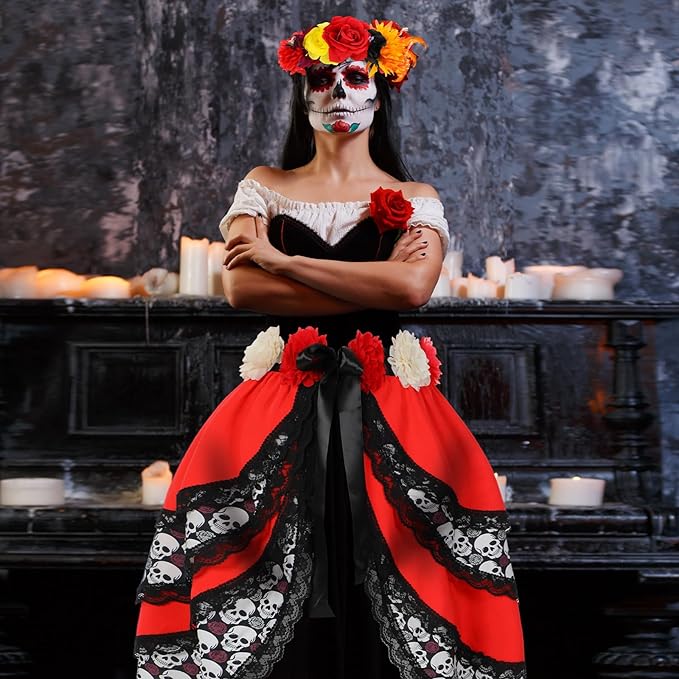Dia de los Muertos, or Day of the Dead, is a vibrant and solemn holiday steeped in centuries of tradition. It’s a time when friends and family come together to remember and honor those who have passed away. Central to the celebration is the iconic dress-up characterized by colorful attire, skull face painting, and an array of symbolic decorations. The significance of Dia de los Muertos dress-up runs deep, reflecting an intricate tapestry of historical practices, cultural identity, and spiritual beliefs.
Part I: Historical Roots and Evolution
Origins in Aztec Rituals
The tradition of Dia de los Muertos has its earliest roots in indigenous Aztec customs. The ancient Mesoamerican people held a cyclical view of the universe and believed that death was an integral part of life. They honored their deceased with festivals and dances, adorning themselves with symbolic garb and intricate body art that would evolve into today’s Dia de los Muertos dress-up observations.
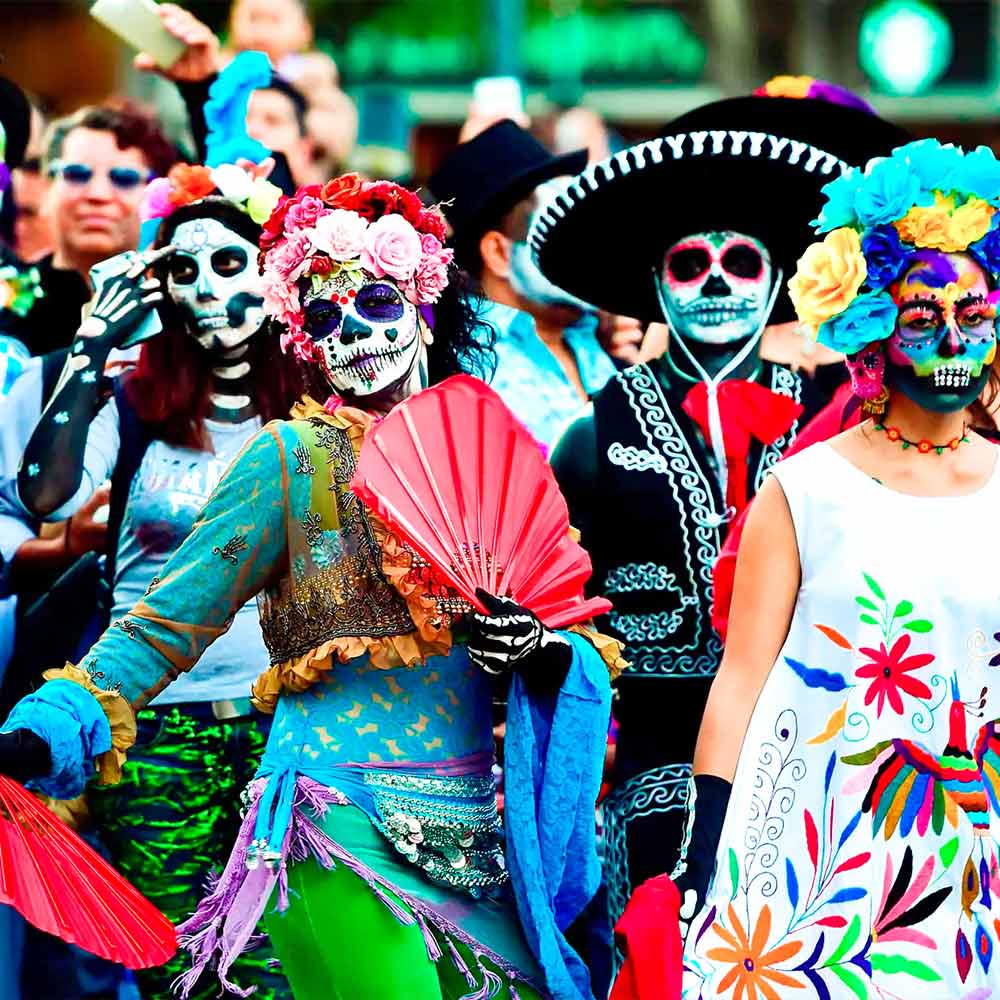
Spanish Influence and Syncretism
The arrival of the Spanish conquistadores and the spread of Catholicism brought new elements to the indigenous death rituals, infusing them with European religious imagery and practices. Out of this cultural syncretism arose the modern incarnation of Dia de los Muertos, blending indigenous respect for the afterlife with All Saints’ and All Souls’ Day celebrations. Dress-up transformed accordingly, merging European mourning attire with the vivid colors and designs of the New World.
Part II: The Significance of Dress and Make-Up
The Calavera and Catrina Figures
No symbol is more iconic of Dia de los Muertos than La Calavera Catrina, the elegant skeleton lady dressed in high-class attire. Created by the Mexican printmaker José Guadalupe Posada, Catrina represents the universality of death and the folly of living for material wealth. Today, dressing up as Catrina—complete with sophisticated clothes and skull makeup—is a central part of Dia de los Muertos festivities.
The Intimacy of Face Painting
In the intimate act of painting one’s face to resemble a calavera, or decorative skull, individuals engage with mortality directly. The practice is not only an artistic expression but also a profound personal ritual. Each color and design plays a role: white to symbolize the bone, black for the shadow of death, and vibrant colors to celebrate life. In this act, the living bridge the gap between themselves and their departed loved ones, embodying the spirit of remembrance and the cyclical nature of life.

Part III: Attire Beyond Aesthetics
The Marigold Path Home
Adornments go beyond the physical body, with orange marigolds playing a significant role in Dia de los Muertos garb. Known as cempasúchil, these flowers are believed to guide the spirits home with their bright colors and strong fragrance. Costumes are often embellished with marigold motifs, and the flowers are scattered around altars and graves, creating a literal and symbolic pathway for the souls of the dead.
Attire as an Offering
The clothing chosen for Dia de los Muertos dress-up is more than decorative; it is an offering to the deceased. By wearing the favorite items or styles of those who have passed. The living connect with the preferences and personalities of their loved ones. This act of donning specific outfits serves as a message of remembrance and undying affection, melding the worlds of the dead and the living in thoughtful celebration.
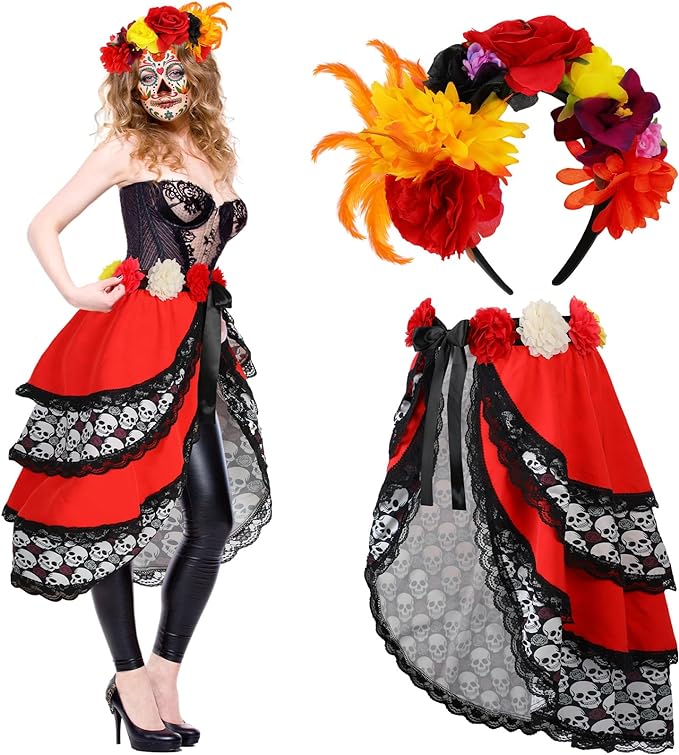
Part IV: Modern Adaptations and the Global Stage
Cultural Fusion and Fashion Trends
As Dia de los Muertos gains popularity globally, its iconic dress-up practices have seen a fusion with other cultural traditions and contemporary fashion. Costumes now may include modern twists, incorporating current trends while paying homage to the traditional elements. This evolution has allowed the celebration to resonate universally, providing a canvas for cross-cultural dialogue and creativity.
The Commercialization Debate
With the international appeal comes the risk of commercialization and cultural appropriation. As Dia de los Muertos attire becomes a popular motif for Halloween and other unrelated festivities. Concerns arise about the dilution and misunderstanding of the tradition’s significance. It emphasizes the need for education and respect when participating in or adopting elements of Dia de los Muertos dress-up practices.
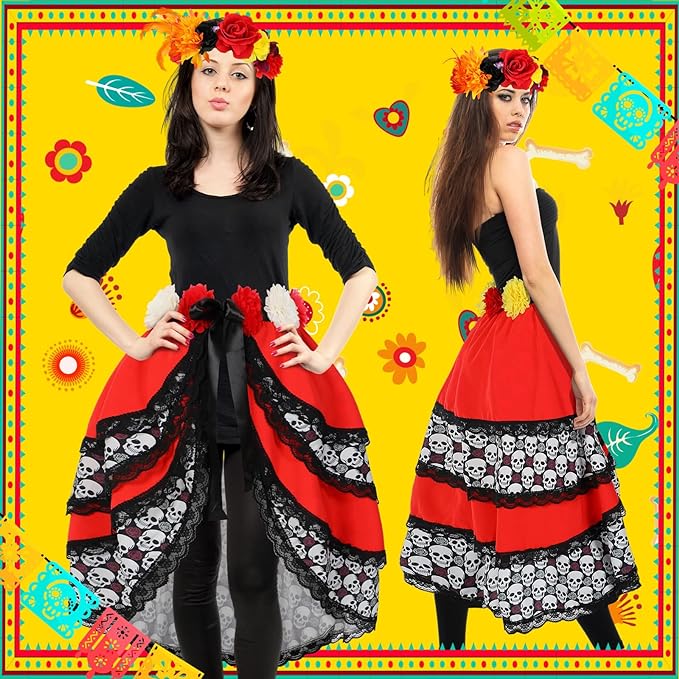
Part V: Community and Personal Expression
The Collective Spirit of Preparation
The communal aspect of preparing for Dia de los Muertos is a cherished process. Gatherings where families and friends create costumes and makeup together are not only about crafting but also serve as a time for collective memory-sharing and emotional support. This shared preparation knits the community closer, solidifying bonds and cultural identity through collaborative creation and storytelling.
Personal Narratives and Artistic License
While there is a shared heritage ingrained in Dia de los Muertos attire, personal stories and creativity play a significant role. Participants often add elements to their dress-up that tell their
Therefore, own unique stories or honor specific individuals. This can range from incorporating a loved one’s favorite colors or symbols into the attire or makeup designs to wearing heirlooms or personal items that belonged to the deceased. This customization adds a layer of intimacy and authenticity to the observance, allowing individuals to express their grief, love. And remembrance in deeply personal ways. It turns the tradition into an evolving tapestry of individual stories. Woven together by the common threads of memory and cultural identity.
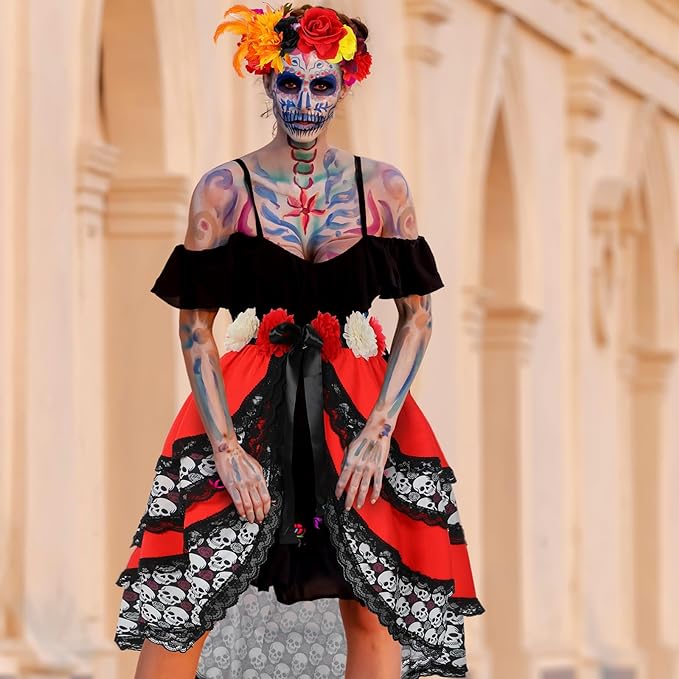
Part VI: The Future of Dia de los Muertos Dress-Up
Preserving Tradition in the Modern World
Moreover, As the world becomes increasingly globalized, the question arises of how traditions like Dia de los Muertos dress-up may be preserved while adapting to contemporary influences. This challenge calls for a balance between innovation and the guardianship of cultural heritage. Education plays a crucial role in this, with community leaders and cultural institutions offering workshops, exhibits. And resources that teach the significance behind the customs.Ensuring that the core values and meanings are passed on to future generations.
The Role of Technology and Social Media
Technology and social media have become instrumental in spreading awareness and appreciation of Dia de los Muertos across diverse audiences. Through digital platforms, people can share their personal celebrations, creative dress-up endeavors, and stories behind their tributes. However, this also comes with a responsibility to foster respectful and informed participation. Digital storytelling and virtual reality experiences offer immersive ways to engage with the tradition. Potentially introducing interactive elements that educate users on the history and cultural nuances of Dia de los Muertos dress-up practices.
Sustainable and Ethical Celebrations
Finally, As the demand for Dia de los Muertos costumes and decorations grows, so does the need for sustainable and ethically produced materials. Conscious consumers and creators are increasingly seeking out eco-friendly and fair-trade options, from biodegradable makeup to artisan-crafted attire. This shift not only respects the earth but also supports local economies and craftsmen. Adding another layer of significance to the tradition by promoting an ethical chain of production and consumption.
